- Clone
- 9C3 (See other available formats)
- Regulatory Status
- RUO
- Other Names
- NCSTN
- Isotype
- Mouse IgG2b, κ
- Ave. Rating
- Submit a Review
- Product Citations
- publications
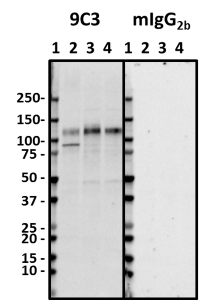
-

Western blot of anti-Nicastrin antibody (clone 9C3) and isotype-matched control mouse IgG2b. Lane 1: Molecular weight marker; Lane 2: 20 µg of human brain lysate; Lane 3: 20 µg of mouse brain lysate; Lane 4: 20 μg of rat brain lysate. The blots were incubated with 0.5 μg/mL of anti-Nicastrin or mouse IgG overnight at 4°C, followed by incubation with HRP-labeled goat anti-mouse IgG (Cat. No. 405306). Enhanced chemiluminescence was used as the detection system. In human the antibody also detects the deglycosylated nicastrin. -

IHC staining of anti-Nicastrin antibody (clone 9C3) on formalin-fixed paraffin-embedded human breast cancer tissue. Following antigen retrieval using Sodium Citrate H.I.E.R. (Cat. No. 928602), the tissue was incubated with 5 µg/ml of the primary antibody overnight at 4°C. BioLegend’s Ultra Streptavidin HRP Detection Kit (Cat. No. 929901) was used for detection followed by hematoxylin counterstaining, according to the protocol provided. The image was captured with a 40X objective. Scale bar: 50 µm -

IHC staining of anti-Nicastrin antibody (clone 9C3) on formalin-fixed paraffin-embedded rat brain tissue. Following antigen retrieval using Sodium Citrate H.I.E.R. (Cat. No. 928602), the tissue was incubated with 5 µg/ml of the primary antibody overnight at 4°C. BioLegend’s Ultra Streptavidin HRP Detection Kit (Cat. No. 929901) was used for detection followed by hematoxylin counterstaining, according to the protocol provided. The image was captured with a 40X objective. Scale bar: 50 µm -

IHC staining of anti-Nicastrin antibody (clone 9C3) on formalin-fixed paraffin-embedded mouse brain tissue. Following antigen retrieval using Sodium Citrate H.I.E.R. (Cat. No. 928602), the tissue was incubated with 5 µg/ml of the primary antibody overnight at 4°C. BioLegend’s Ultra Streptavidin HRP Detection Kit (Cat. No. 929901) was used for detection followed by hematoxylin counterstaining, according to the protocol provided. The image was captured with a 40X objective. Scale bar: 50 µm
| Cat # | Size | Price | Quantity Check Availability | Save | ||
|---|---|---|---|---|---|---|
| 852301 | 25 µg | 112 CHF | ||||
| 852302 | 100 µg | 276 CHF | ||||
Nicastrin is one of the essential components of the γ-secretase complex. The γ-secretase complex is one of the proteases involved in processing amyloid precursor protein (APP) to amyloid beta (Aβ). Nicastrin is not catalytically active, instead, it promotes the maturation and localization of other catalytic and regulatory units of the γ-secretase complex. Nicastrin has alsp been reported to regulate neprilysin, which is the enzyme involved in the degradation of Aβ fragment.
Product DetailsProduct Details
- Verified Reactivity
- Human, Mouse, Rat
- Antibody Type
- Monoclonal
- Host Species
- Mouse
- Immunogen
- Synthetic peptide corresponding to the C-terminal 18 a.a. of mouse Nicastrin.
- Formulation
- Phosphate-buffered solution, pH 7.2, containing 0.09% sodium azide.
- Preparation
- The antibody was purified by affinity chromatography.
- Concentration
- 0.5 mg/ml
- Storage & Handling
- The antibody solution should be stored undiluted between 2°C and 8°C.
- Application
-
WB - Quality tested
IHC-P - Verified - Recommended Usage
-
Each lot of this antibody is quality control tested by Western blotting. For Western blotting, the suggested use of this reagent is 0.1 - 0.5 µg per ml. For immunohistochemistry, a concentration range of 1.0 - 5.0 µg/ml is suggested. It is recommended that the reagent be titrated for optimal performance for each application.
- Application Notes
-
In human, the antibody also detects the deglycosylated nicastrin, which is observed at ~ 78kD.
-
Application References
(PubMed link indicates BioLegend citation) -
- Esselens C, et al. 2004. J. Cell Biol. 166(7):1041. (WB)
- Product Citations
-
- RRID
-
AB_2728591 (BioLegend Cat. No. 852301)
AB_2728592 (BioLegend Cat. No. 852302)
Antigen Details
- Structure
- Deglycosylated nicastrin is a 709 amino acid protein with a molecular mass of ~78 kD. Higher molecular weight band of ~110 kD corresponding to glycosylated nicastrin is observed by WB.
- Distribution
-
Tissue Distribution: Ubiquitously expressed.
Cellular: Distribution: Plasma Membrane, endoplasmic reticulum, lysosome, golgi apparatus, and cytoskeleton. - Function
- Nicastrin is an essential component of the γ-secretase complex that processes amyloid precursor protein to amyloid beta. It is also involved in degradation of amyloid beta fragments.
- Interaction
- Presenilin, APH-1, PEN-2
- Biology Area
- Cell Biology, Neurodegeneration, Neuroscience, Protein Misfolding and Aggregation, Protein Trafficking and Clearance
- Molecular Family
- Enzymes and Regulators, Secretases
- Antigen References
-
- Yang D, et al. 2002. J. Biol. Chem. 31:28135.
- Johnson DS, et al. 2017. Cold Spring Harb Perspect Med. 10.1101/cshperspect.a024067.
- Zhang X, et al. 2014. Front Cell Neurosci. 10.3389/fncel.2014.00427.
- Gene ID
- 23385 View all products for this Gene ID
- UniProt
- View information about Nicastrin on UniProt.org
Related Pages & Pathways
Pages
Related FAQs
Other Formats
View All Nicastrin Reagents Request Custom Conjugation| Description | Clone | Applications |
|---|---|---|
| Purified anti-Nicastrin | 9C3 | WB,IHC-P |
Compare Data Across All Formats
This data display is provided for general comparisons between formats.
Your actual data may vary due to variations in samples, target cells, instruments and their settings, staining conditions, and other factors.
If you need assistance with selecting the best format contact our expert technical support team.
 Login / Register
Login / Register 




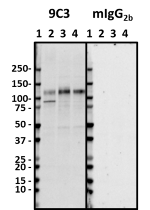
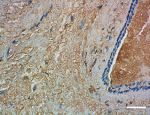
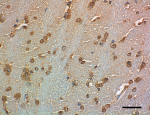
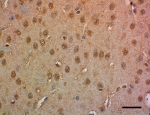



Follow Us